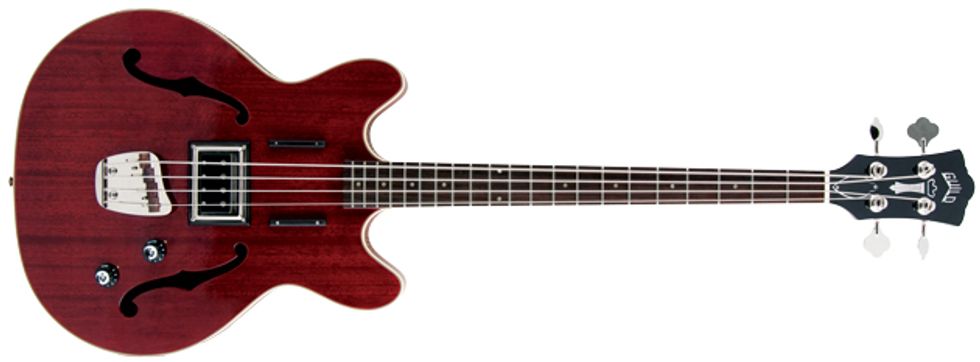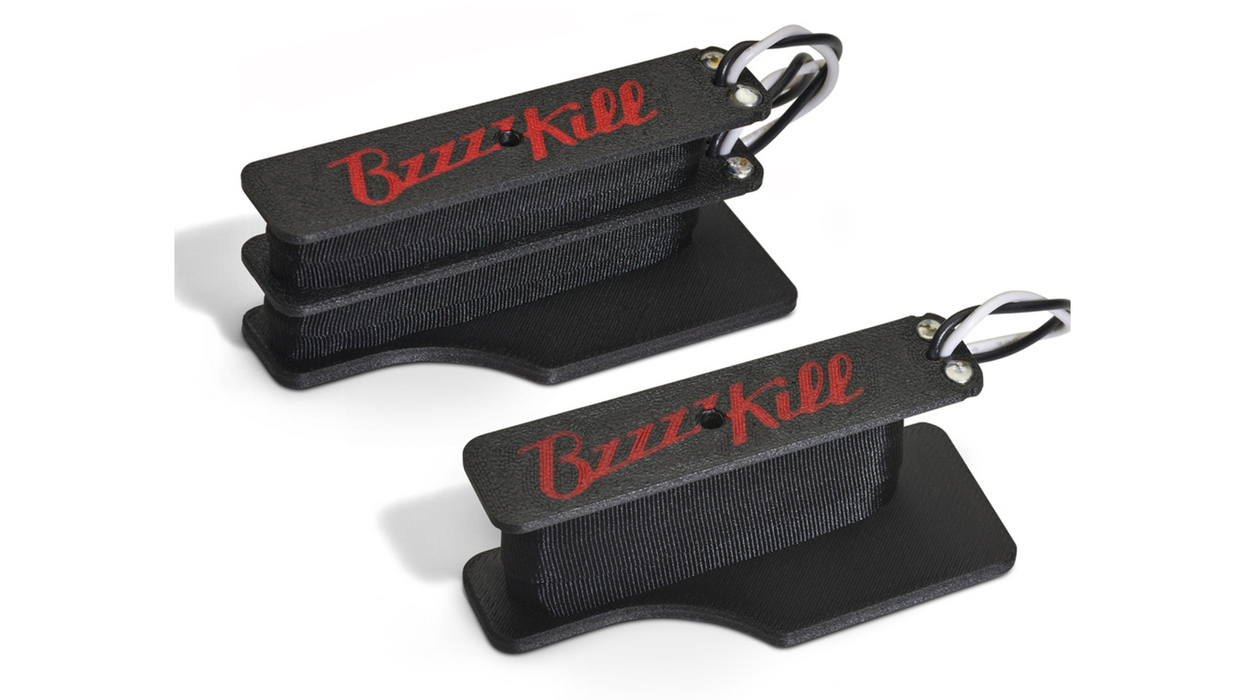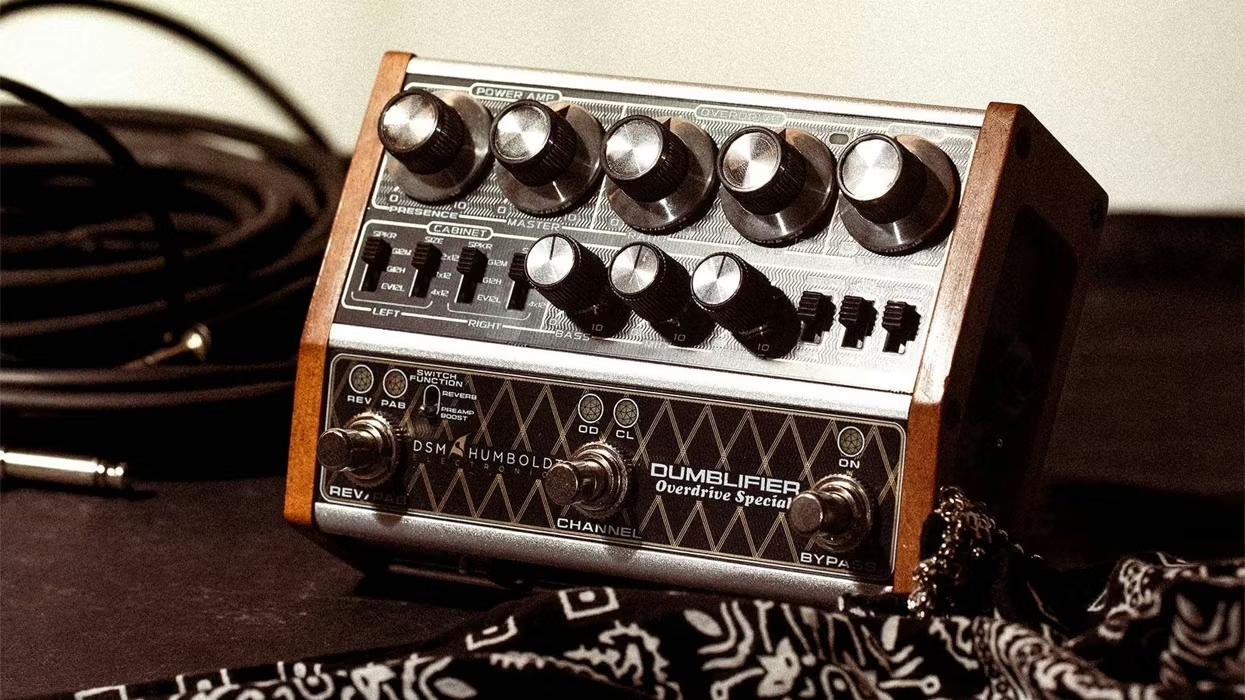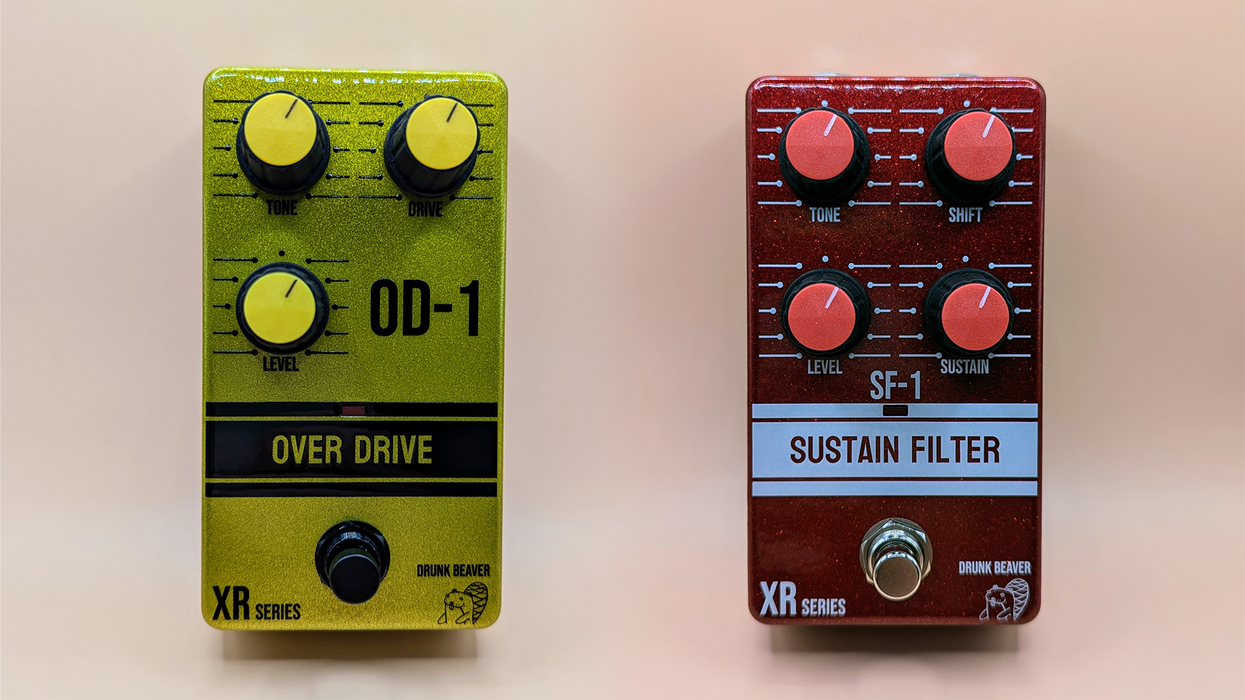Since setting up shop in early 1950s New York City, Guild Guitars has established itself as one of a handful of great, classic American guitar companies. Guild has seen its share of ownership swaps, direction changing, and relocations over the years, but the company has maintained its reputation amongst players as a manufacturer of solid instruments for the working musician. Attracting players from across the genre spectrum, Guild instruments have found go-to-axe status in the hands of luminaries from Mississippi John Hurt to Richie Havens to Kim Thayil, along with just too many others to mention.
While probably best known over the years for their acoustics, Guild has given us plenty of electric offerings too. And with the unveiling of the Newark St. Collection earlier this year, FMIC-owned Guild has brought back eight of their classic electric models from the ’50s and ’60s. One of them is the Starfire bass, a 4-string legend that first made its mark as the low-end-providing tool for bands like the Grateful Dead, Jefferson Airplane, and the Byrds. Here, we take this next-generation Starfire for a spin.
Crown of Creation
Opening up a new instrument’s case for the first time ranks up there pretty high on the scale of life’s pleasures. And popping the top of the Starfire’s deluxe TKL hardshell case didn’t disappoint by any stretch. This is an instrument that just oozes a classic vibe and begs to be held and played.
The modern-era, Korean-made Starfire bass almost looks like it was pulled out of a time capsule from 1965—the year Guild first introduced the bass version of their Starfire IV guitar. And like its ’65 inspiration, the Newark St. Starfire is a short-scale (30 3/4"), double-cutaway semi-hollow.
The slender 3-piece, U-shaped neck is constructed of mahogany and topped with a rosewood fretboard. Keeping true to its predecessor, the Starfire’s top, back, and sides are all constructed of laminated mahogany. Some of the other appointments that help feed the vintage vibe of the original include the rosewood tug bar and thumb rest, rosewood string saddles, ivory white binding for the neck and body, unbound f-holes, and the unmistakable Chesterfield inlay adorning the headstock.
Billed as “handbuilt,” the cherry red Starfire gave every initial indication that care and attention played a part in its construction. I didn’t come across any finish flaws, loose fitting hardware, or other red flags when first looking it over.
Powering the Starfire is a single, passive Bi-Sonic pickup that’s located in the bridge position. The pickup configurations of the original Starfire basses varied through the years but this solo Bi-Sonic setup in the bridge is true to the ’65 model. Also like the original, the two black control knobs for tone and volume each have position markers inset in the body next to their sides.
The original Starfires were intended to offer up an easy playing neck, and the vintage spec’d, skinny neck of this bass is no different. The fret dress was super clean and the neck felt fast and comfortable as I spent some quality time working the Starfire unplugged. And while doing so, I found this semi-hollow can resonate like there’s no tomorrow.
Once I stood up with the Starfire strapped on, it took the expected neck dive that’s typical of a semi-hollow bass. Getting used to the balancing act was a pretty quick process, however, given the Starfire’s light overall weight and short scale.
Ratings
Pros:
Very true to the classic ’65 Starfire. Solid construction, excellent playability, and high visual appeal.
Cons:
Not a lot of tone-shaping available onboard. Semi-hollows aren’t for everyone. A touch pricey.
Tones:
Playability/Ease of Use:
Build/Design:
Value:
Street:
$1,099
Guild Starfire Bass
guildguitars.com
So You Want to be a Rock ’n’ Roll Star I fired up the Starfire by plugging it into a Gallien-Krueger 800RB paired with a TC Electronic RS410 cab. I started out with the amp’s EQ flat to see what I could dial in using just the bass. Not surprisingly with a single passive pickup, the one tone knob didn’t provide much in the way of variation as I rolled it back and forth, so I just ended up leaving it dimed and relied on my amp’s EQ. With a press of the amp’s mid-contour switch, pushing up the treble to about 3 o’clock, and rolling the lo-mid knob down to 10 o’clock, I got to something I liked. And that was a woody, earthy tone with lots of warmth on hand, albeit not much punch.
I detected a markedly different response depending on my right-hand placement. For me, the angle and position of the thumb rest felt a little cramped when I anchored there, so I naturally gravitated toward my normal resting spot around or on the pickup. The tone was still totally usable here, but forcing myself to ignore muscle memory, I moved back toward the neck and rested on the rosewood bar again. This shift allowed me to pull a much fuller, rounder, and dynamic tone from the strings—so much so that it almost made my pickup-resting position sound thin in comparison.
Warm, old-school bass tone is what the Starfire is all about, and it certainly leans towards the lows and mids without a ton of brightness. I suspect this low/mid emphasis would be even more pronounced with a set of flatwounds, which would probably complement this 4-string nicely.
The Verdict With the reintroduction of this storied classic, Guild is no doubt going to make a number of bassists happy—especially those who have dreamed of adding a Starfire to their clan, but couldn’t muster the coin for a vintage model. That said, this bass will still set you back more than a grand. As much as I like the fact that Guild stayed so close to the original Starfire, I found myself thinking about the dual-pickup Starfire II and the benefits of having some more sonic options on hand.
The new incarnation of the Starfire bass is a nicely constructed instrument and it’s hard to find much fault with it. It won’t appeal to slap stylists, those looking for super-modern tones, or more aggressive players who might find the dual finger rests a nuisance. (They can be removed.) The Starfire, however, could become a go-to for many players because its rich, warm, mellow tones are more than fitting for R&B, jazz, and of course, rock ’n’ roll. This bass has a little bit of history there.








![Rig Rundown: AFI [2025]](https://www.premierguitar.com/media-library/youtube.jpg?id=62064741&width=1245&height=700&quality=70&coordinates=0%2C0%2C0%2C0)












 Shop Scott's Rig
Shop Scott's Rig















































